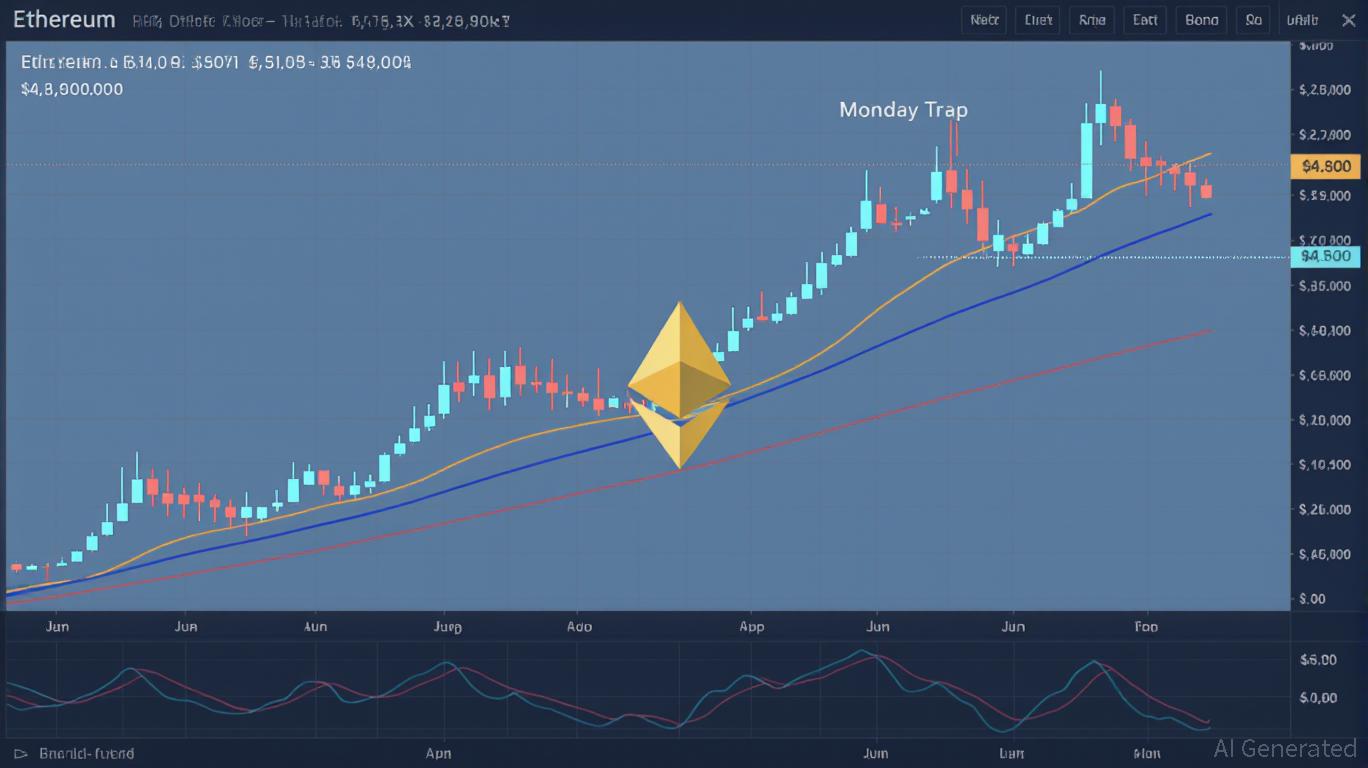KYI Tech Embeds Identity in Stablecoins to Thwart $1.6B Fraud Crisis
- Circle and Paxos pilot KYI tech with Bluprynt to embed verified issuer identities in stablecoins, targeting $1.6B annual fraud losses. - The blockchain-native system enables real-time token verification via wallets and explorers, aligning with U.S. regulatory shifts under the GENIUS Act. - By attaching auditable credentials to tokens at issuance, the framework strengthens transparency and compliance for major stablecoins like USDC and PYUSD. - Regulators and industry leaders endorse the initiative as a c
Circle and Paxos, two major stablecoin issuers, have partnered with Bluprynt to pilot a verification system designed to combat counterfeit stablecoins. The initiative, dubbed "Know Your Issuer" (KYI), embeds verified digital identities directly into stablecoin tokens, enabling users to trace assets back to their legitimate issuers. The pilot program, which integrated Circle’s USDC and PayPal’s PYUSD, aims to curb losses caused by counterfeit tokens, which Bluprynt estimates cost users at least $1.6 billion annually. By attaching verified credentials to digital assets on the blockchain, the solution seeks to preserve brand integrity and reduce fraud. The pilot was announced as the U.S. Office of the Comptroller of the Currency introduced new guidance for banks managing digital assets, signaling a regulatory shift toward clearer oversight of crypto services [1].
Bluprynt’s KYI model is an adaptation of traditional KYB (Know Your Business) compliance, but with a blockchain-native approach. It allows issuers to attach verifiable identities to tokens at the point of issuance, offering a transparent and auditable mechanism for both retail investors and institutional users. This system could be integrated into digital wallets and on-chain tools, such as blockchain explorers, to provide real-time verification of token authenticity. Christopher Giancarlo, a former CFTC chair and Paxos board member, praised the framework as a breakthrough for digital asset integrity. The technology also aligns with growing regulatory demands for transparency and accountability in the crypto space, particularly as the industry evolves to meet federal standards like those established by the GENIUS Act [2].
The pilot is timely, as the U.S. government continues to finalize a regulatory framework for stablecoins. The GENIUS Act, passed in July 2025, established clear requirements for stablecoin issuance, including one-to-one reserve backing, monthly disclosures, and mandatory audits for large issuers. The law also excluded stablecoins from being classified as securities or commodities, placing oversight under banking regulators. This development has been viewed as a major win for the industry, offering clarity and legitimacy to stablecoins as a financial instrument. Circle’s USDC and PayPal’s PYUSD, issued by Paxos, are among the largest stablecoins by market capitalization, valued at $69 billion and $1.1 billion, respectively [3].
The KYI framework is also being integrated with Solana’s Attestation Service, allowing issuers to publish credentials directly on-chain. This infrastructure enables wallet providers, explorers, and other tools to verify token legitimacy without relying on off-chain systems. The move is particularly relevant in a market where counterfeit tokens, often created on platforms like Pump.fun, can closely mimic legitimate stablecoins. Phantom and other self-custodial wallets already display price discrepancies, but the visual similarity between fake and real tokens remains a risk. The KYI system aims to address this by providing verifiable proof of issuance, enhancing trust and reducing confusion among users [1].
Analysts suggest that the pilot could influence broader regulatory efforts to combat financial crime in the crypto space. The U.S. Treasury has sought public input on technologies for detecting illicit activity in digital assets, and frameworks like KYI offer a potential model for ensuring compliance. As stablecoins become more integrated into mainstream finance, tools that enhance transparency and accountability will likely play a critical role in maintaining market confidence. The GENIUS Act has already prompted major banks and fintech firms to explore stablecoin offerings, with JPMorgan , Citigroup , and others developing their own digital assets or payment solutions. These developments signal a shift toward a more regulated, transparent, and institutional-grade stablecoin market [5].
Source:

Disclaimer: The content of this article solely reflects the author's opinion and does not represent the platform in any capacity. This article is not intended to serve as a reference for making investment decisions.
You may also like
Ethereum's Momentum Divergence and Impending Correction: A Technical and Sentiment Analysis
- Ethereum faces bearish divergence in RSI/MACD after hitting $4,960, signaling potential correction risks amid fragile liquidity-driven ranges. - Critical support at $4,400–$4,000 under pressure as weak volume and overheated derivatives markets raise liquidation risks during recurring "Monday Trap" patterns. - Mixed sentiment (Fear & Greed Index at 48–51) contrasts with technical exhaustion, while analysts warn 50% correction remains a structural risk if macroeconomic conditions worsen. - Strategic focus

The Institutionalization of AI-Driven Finance: JPMorgan’s $500M Bet on Numerai and the Rise of Decentralized Quant Strategies
- JPMorgan invests $500M in Numerai, a decentralized AI hedge fund, signaling institutional adoption of crypto-native strategies. - Numerai's model crowdsources global data scientists via blockchain incentives, achieving 25.45% net returns in 2024 with low fees. - The investment doubles Numerai's AUM to $1B, validating scalable, cost-efficient AI-driven finance as traditional models struggle with agility. - NMR token surged 38% post-investment, highlighting token economics' role in institutionalizing decen

AI Talent Development and Long-Term Tech Investment: Corporate R&D Strategies for Future-Proofing Through Campus Recruitment
- Corporate R&D is reshaping as AI drives talent wars, with campus recruitment now critical for securing AI-ready professionals amid a 50% drop in entry-level hiring. - AI tools like chatbots and predictive analytics boost hiring efficiency, with Mercy Clinics seeing 14% higher hires and Stanford Healthcare reducing support tickets by 30%. - AI accelerates R&D ROI, cutting drug discovery timelines by 50% and saving 35,000 work hours annually, while ethical challenges like algorithmic bias demand frameworks

XRP Volatility: Whale Exits vs. Retail Optimism – A Precarious Tipping Point
- XRP's August 2025 market faces tension between institutional selling ($1.91B whale offloads) and retail ETF-driven optimism ($1.2B in ProShares Ultra XRP ETF). - Macroeconomic risks and trade tensions triggered 9% price drops, but whale accumulation ($3.8B added) and RLUSD stablecoin adoption hint at long-term positioning. - Retail traders target $3.70-$3.75 based on technical indicators, with whale buying in $2.84-$2.90 range potentially forming a $3.00 support floor. - Market balance hinges on whale be
